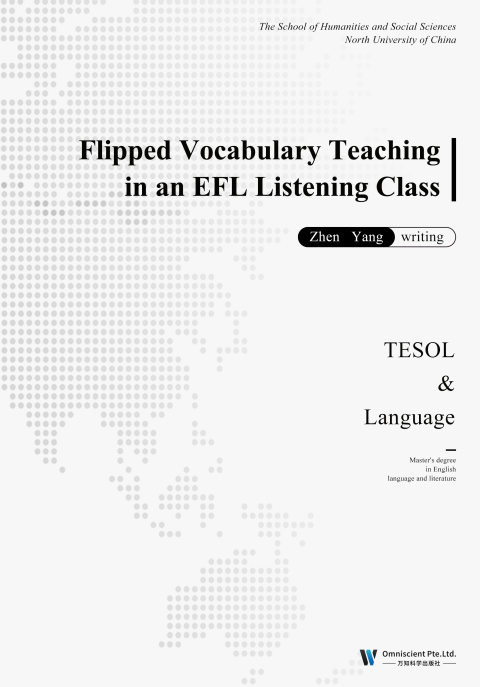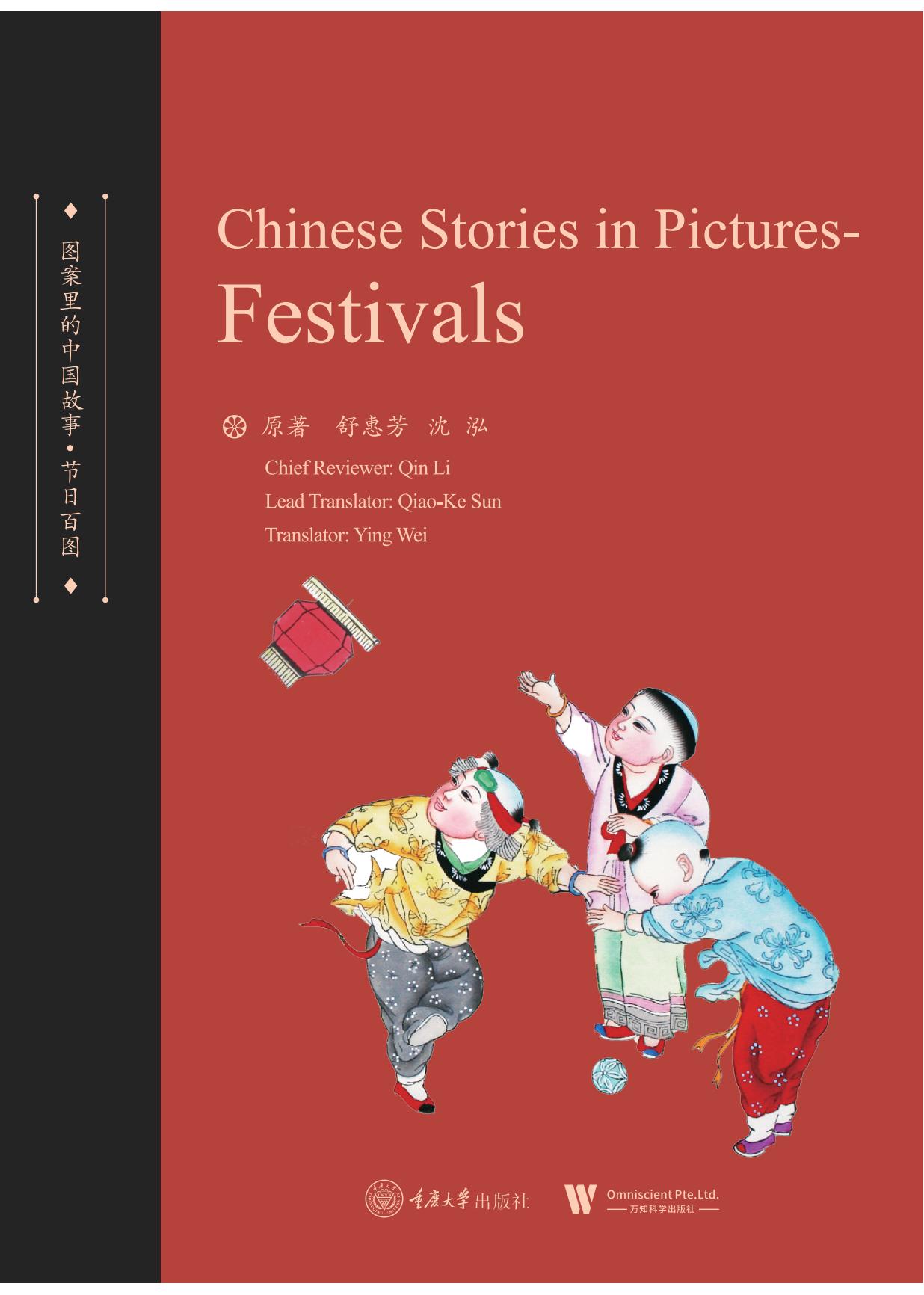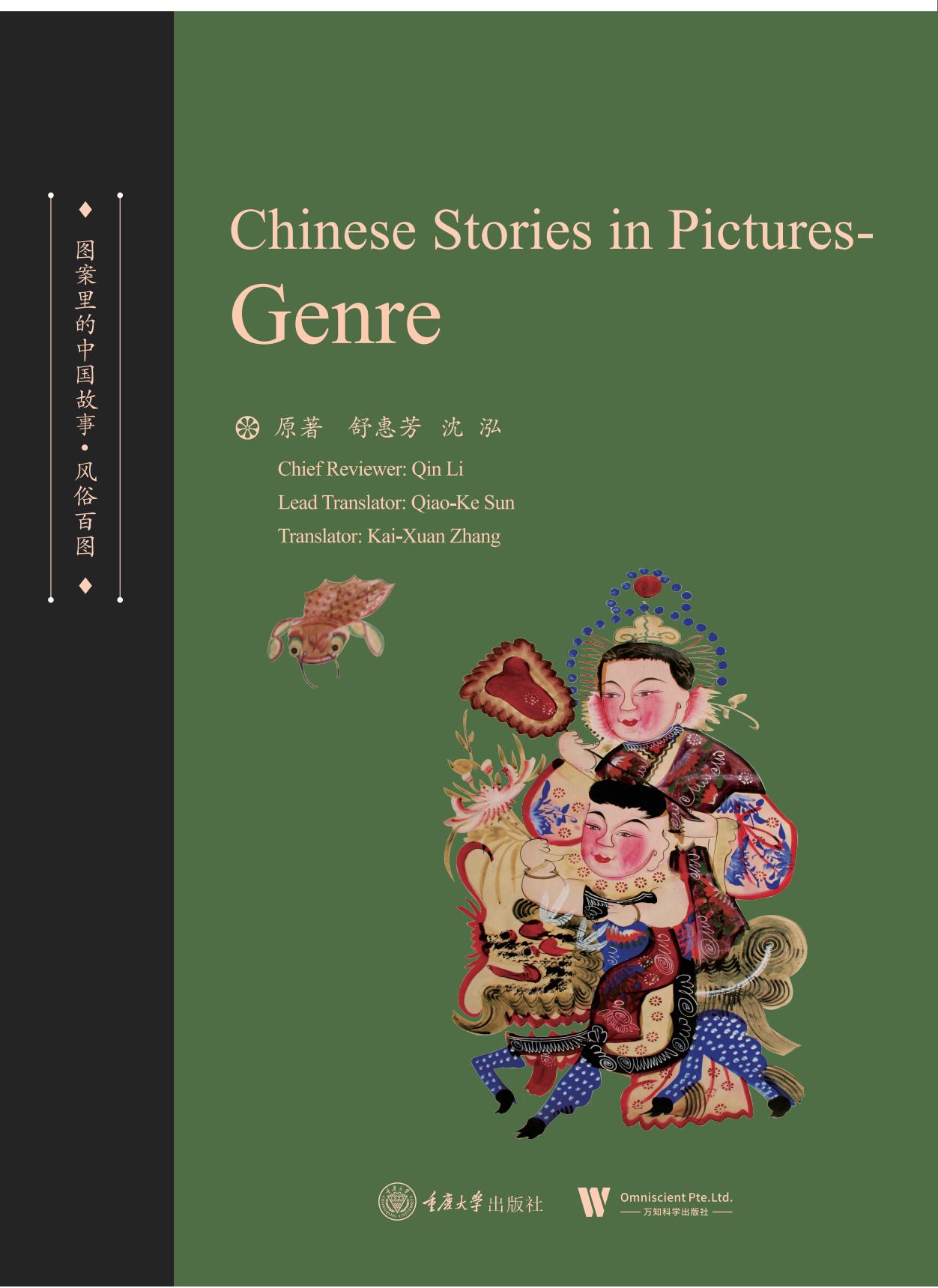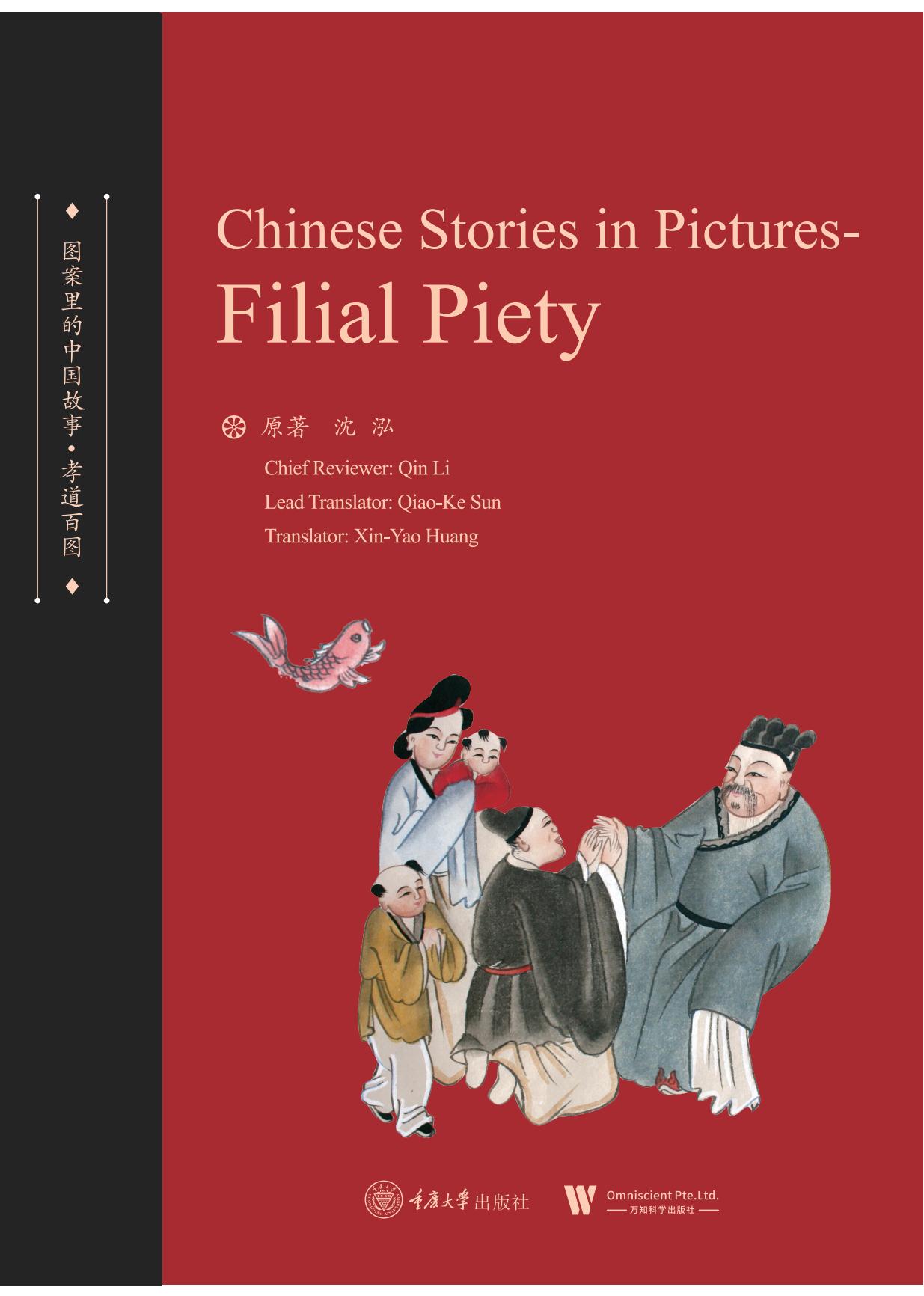
自 序 如果说绘画是基础,那么摄影则是逼迫绘画向前的直接导火索。摄影是时间的艺术,而绘画则是时间的迭替。 只为美,只为作者发现武冈的美。 执起画笔,捧着相机,作者开始走村串巷,从业二十年来,登高跳远,交映成流动的昨天与今天。 按下快门,拍下花开花落的永恒,忘记选景,面对白驹过隙的虚空。 执起画笔,捧着相机,作者开始走村串巷,从业二十年来,登高跳远,交映成流动的昨天与今天。 一张张照片,一幅幅国画,这就是我们的家乡,美丽的武冈、富饶的武冈、古朴的武冈、和谐的武冈。 尽管远离尘嚣,万籁俱寂,我们仍然透过画面发现美,感应美。 用画笔描下镜头所拍不到的温度,用镜头拍下画笔所描不出的细节。在镜头与画笔下,我们的心灵也将被家乡更多的美所感动。 其实,在摄影与绘画的天地之外,每一个武冈人都已见证了武冈的巨巨变,并且珍视这来之不易的和谐与安定。 美无需刻意修饰, 爱无需做作表白。 沐浴在武冈的自然风光与人文风情里,我们领悟了天、地、人和谐相融的永恒主题。
作者尹红芳
2023年5月28日

Brief Introduction of the Book
This book generally includes five chapters. Chapter one introduces the purposes of carrying out a study with flipped classroom approach in a listening course under Chinese context. Chapter two provides some theoretical backgrounds for the present study and reviews some previous studies that have been conducted in related areas, such as studies about vocabulary teaching and learning, listening teaching, blended learning and flipped classroom approach. Chapter three introduces the methodology applied in the study including participants, research procedures, research materials applied, data collection methods and data analysis. Chapter four mainly presents the results and discussion related to the study, including quantitative and qualitative data. Chapter five provides the summaries, limitations and pedagogical implementations of the application of the flipped classroom approach of the study.

Chinese traditional festivals are the significant days claimed, modulated, established, and carried down by Chinese ancestors to adapt to various needs of life and production, as well as to commemorate certain individuals or events. Major Chinese traditional festivals include the Spring Festival, Lantern Festival, Qingming Festival, Dragon Boat Festival, Qixi Festival, Mid-Autumn Festival, and Chong Yang Festival. These traditional festivals are diverse in form and rich in content, catering to basic human needs, such as existence needs, mind tranquillity, and physical health. Apart from satisfying basic needs in life, these traditional festivals also play a unique cultural role in maintaining the normal social order. Chinese traditional festivals can be traced to the long history of the Chinese nation, thus constituting a valuable spiritual and cultural heritage of the Chinese people.
The customs associated with these traditional festivals are rich and varied, and their cultural connotations can be summarized in the following aspects. First, these festival customs elevate and enrich folkloric practices, epitomizing many of the essences of Chinese folk culture. Second, they reflect and satisfy people’s spiritual needs. Third, they weave and strengthen the ties of interpersonal relationships, serving as a lubricant for social interaction and emotional exchanges. Fourth, they construct platforms for spiritual and physical revelry, providing people with spaces for unreserved psychological catharsis and free emotional expression. Fifth, they create fresh momentum for a world outlook that emphasizes the integration and inherent relationship between heaven, earth, and man, thus offering fertile ground for folk religious worship and beliefs. Sixth, they provide opportunities for leisure and entertainment. According to the “Views on the Implementation of the Project of Inheriting and Developing Traditional Chinese Culture”, issued by the General Office of the Central Committee of the Communist Party of China and the General Office of the State Council, further progress will be made in the revitalization project for Chinese traditional festivals and “Our Festivals” themed activities, to enrich the cultural connotations of traditional Chinese festivals and encourage new festive customs. Chinese traditional festivals constitute unique Chinese folk culture. Although the original colour of some festivals has been toned down in modern society, we can still perceive their vibrant festive culture through the traditional pictures handed down from generation to generation. This book selects Chinese traditional pictures used for festive celebrations in the old days and re-creation works by contemporary artists based on these traditional pictures to showcase the scenes of major Chinese traditional festivals. These pictures not only embody the festive mood but also carry the connotations of Chinese folk culture. Centred on each festival picture, the book tells the origins, interesting stories, customs, as well as myths and legends associated with these festivals. From these pictures, motifs, and symbols, we can still glimpse the festive carnival in old times and feel people’s leisurely and peaceful mindset.
Shen Hong
Winter 2021

The meaning of custom, or folklore, refers to the summation of conduct, etiquette, habits, and other practices that have been established over the long term in the social life of the people in a particular group or region. The content of folklore is vast and diverse, encompassing material production, material life, social organizations, seasonal festivals, life rituals, marriage and childbirth, folk beliefs, folk science and technology, folk storytelling, folk language, folk art, folk games, recreational activities, and so on.
Historically, secular life was once beneath the attention of scholars, as the elegant life advocated by them was seen as opposed to secular life. The interest in folklore in Chinese academia dates to the Folksong Collecting Movement in 1918. This movement, initiated by Peking University, garnered widespread support and subsequently sparked a trend of “going to the people” within academia. Many pioneers of the New Culture Movement (Li Dazhao, Hu Shi, Zhou Zuoren, Lu Xun, etc.) were engaged in this movement to some degree, making studying folklore as a means for intellectuals to connect to the common people and “reform” Chinese culture in the context of a crisis of Chinese nationhood.
In 1985, after receiving his PhD (History and East Asian Languages) from Harvard University, Hung Chang-tai, a historian specializing in modern Chinese cultural history, published the book Going to the People: Chinese Intellectuals and Folk Literature, 1918-1937, which exhibits a shift of scholars’ passion from elegant life to secular life, as well as a trajectory of the integration of refined and popular cultures. In fact, secular life encompasses both the vulgar and elegant elements, the integration of which reflects the true essence of secular life.
Through nearly a hundred Chinese traditional genre paintings, this book tells folklore stories related to different stages throughout one’s lifetime, including childbirth, child-raising, love, marriage, family, wealth seeking, birthday celebrations, and other aspects. In ancient times, although large numbers of New Year paintings could only be seen in rural markets and town streets at the end of the lunar calendar year, different themed New Year pictures could still be found during festive occasions as well as customs for weddings and funerals throughout the year.
These folk New Year pictures often feature themes beloved by people, some of which are both ceremonial paintings and genre paintings. The Taohuawu New Year picture themed on the “Immortals of Harmony and Union” is a good example. In this picture, two boys, dressed in embroidered clothes, barefoot or wearing straw sandals, one holding a colorful box and the other holding a lotus flower, are depicted as gods of happiness and wealth. During the wedding ceremony of newlyweds, this picture should be hung as a traditional custom, which can be traced back to the commentary on Rites of Zhou, “With the help of Immortals of Harmony and Union, a man of thirty and a woman of twenty would be a good marriage match.” Similar records can also be found in Jiaoshi Yilin (Mr. Jiao’s Many Thoughts on the Book of Changes).
Each Chinese traditional genre painting has its unique origin and story. The fame of “Immortals of Harmony and Union” has undergone a development process. According to Xihu Youlan Zhi (a local gazetteer on the West Lake), in the early ages, this title refers to a person named Wan Hui, but in Idiomatic Dialogues complied by a Qing Dynasty scholar, it refers to two great monks. “In the eleventh year of the Yongzheng Emperor’s reign in the Qing Dynasty (1733), the great monk of Mount Tiantai, Hanshan, was sealed as the Saint of Harmony, and the great monk Shide was sealed as the Saint of Union.” Hence, they were known as the “Saints of Harmony and Union”, or “Immortals of Harmony and Union”.
Genre paintings reflect conduct, etiquette, and other folk practices closely related to people’s daily lives, gradually becoming prevalent and passed along over time through social convention. They are the visual carriers for people to freely express their emotions and showcase their unique spiritual outlook and worldview. In an era without newspapers, television, or online media, folk New Year pictures were the most widely disseminated and circulated media to bring spiritual comfort and longings for a better life to common people.
Shen Hong
Winter 2021

In Chinese traditional culture, filial piety has influenced the lifestyles and beliefs of the Chinese people for thousands of years, thus becoming an important traditional spirit. Indeed, filial piety binds every member of the family together and serves as a force that cohesions society and maintains national stability. It is thus the most significant asset in Chinese traditional culture. We can study it but cannot ignore it; we can criticize its feudal and negative fronts, but we cannot abandon its fine and benevolent facets. The ancient seal character for “filiality” depicts a scene consisting of an upper part and a lower part: an elderly person with a bent back, white hair flowing, leaning on a cane at the top, and a child reaching out with both hands to support the elderly from below. The original meaning of the Chinese character “filiality” (xiao 孝 ) is clearly explained as follows in Shuowen Jiezi, a Chinese dictionary compiled by Xu Shen during the Eastern Han Dynasty. The upper part of this character represents the aged parents, while the lower part represents the offspring; with the “aged parents” above and the “offspring” below, the combination of these two parts signifies the core connotation of “filial piety”, namely, “the offspring follows and obeys their parents”. In terms of action, the “offspring” carrying the “aged parents” symbolizes that the aged parents are physically frail, requiring the offspring to carry them as a means of transportation, filled with feelings of gratitude, repayment, and care. From the perspective of homophonous cognates, the ancient Chinese phonology of “filiality” (xiao 孝 ) is the same as “goodness” (hao 好 ). The oracle bone script of the Chinese character “goodness” contains a left part and a right part. The left part depicts a married woman kneeling to nourish her infant; the right one represents a “child”. The overall graphic conveys the meaning of young offspring snuggling next to his or her mother, filled with innate family affection. Thus, the character signifies dearness and affection. As the Chinese characters “filiality” and “goodness” belong to the same etymological root, and the connotation of “filiality” also includes the meaning of love and affection, the definition of “filiality” is the manifestation of affection towards one’s parents and obedience to their wishes. It is an outflow of deep feelings for one’s loved kinsfolk, sincere gratitude for life, and uncomplaining reciprocation. For children to love their parents, being finial means they should have an extremely humble and harmonious mindset. Just as a crow knows to repay kindness by taking care of its parents and a little lamb kneels to receive milk from its mother, filial piety towards one’s parents is an innate instinct of humans and a natural emotion that comes with birth. In particular, elevating filial piety to a “way” of man is unique in China, as stated in The Works of Mencius, “The course of Yao and Shun was simply that of filial piety and fraternal duty.” How can filial piety be achieved? Records in the classics of ancient China can give us sensible clues. According to the Book of Rites, “The repairing of the ancestral temple and the reverential performance of the sacrifices were intended to teach the people to follow their dead with their filial duty.” Another record can be found in the chapter “Canon of Yao” in the Book of Documents, “(Emperor Yao) was able to promote moral values, so that amity prevailed in his clan. He then clarified the hierarchical order of tribal officials. Only when this was done could all vassal states, big and small, prosper in harmony, and the people become friendly with each other.” Virtue and filial piety were also the moral guidelines of the ruling class in the Zhou Dynasty, as “virtue towards heaven” and “filial piety towards ancestors” were the distinctive features of Zhou ethics. The Chinese character “filiality” already appeared frequently on inscriptions on Western Zhou bronze vessels, with at least 112 inscriptions touching upon filial piety. The explanations of filial piety in the classics of ancient China are featured with humanity. For example, in the Book of Documents, Emperor Shun was said to live in harmony with his relatives by his filial piety. In Analects, Confucius once said, “The filial piety nowadays means the support of one’s parents.” In the Book of Rites, filial piety has three degrees. “The highest is the honouring of our parents; the second is the not disgracing them; and the lowest is the being able to support them.” In The Works of Mencius, Mencius emphasized that we should honour old people as we do our own aged parents. These records all highlight the beauty of filial piety. The Chinese concept of filial piety originates from Confucius’ thoughts on filial piety. Numerous discussions on filial piety can be found in Analects, even including specifics on how to practice filial piety in daily ethics. Confucius pointed out that filial piety to parents involves supporting them, respecting them, and loving them. He said, “A young man should be devoted to his parents at home and respectful to his elders outside it.” “While his parents are living, a son should not go far abroad; if he does, he should let them know where he goes.” Mencius, the “Second Sage” of Confucianism, was active during the mid-Warring States period. He provided a more detailed explanation of the behavioural norms of filial piety. “Of all which a filial son can attain to, there is nothing greater than his honouring his parents.” “When your parents are alive, serve them according to ritual. When they die, bury them according to ritual and make sacrifices to them according to ritual.” The ancient Chinese also proposed “governing the country with benevolence and filial piety”, which means to use family reverence to bring proper order to the empire, thus regarding filial piety as the highest principle of man. This principle was centrally demonstrated in Classic of Filial Piety written in the early Han Dynasty. The rulers of the Han Dynasty vigorously praised those who were filial and respectful to their elders and diligent in farming. In the biographic sketch of emperors in the Book of Han Dynasty and Book of the Later Han Dynasty, there were as many as 32 instances of nationwide commendations and conferment of noble titles to those who exemplified filial piety and respect. At that time, an official position was specifically established for those who practiced filial piety and integrity well. Confucius believed that filial piety was the best form of education. This thought permeated his entire spirit of filial piety and has had positive implications for both family and social life. Confucius said, “He who loves his parents will not dare (to incur the risk of) being hated by any man, and he who reveres his parents will not dare (to incur the risk of) being contemned by any man.” Confucius summarized the core content of filial piety education into three points, “It commences with the service of parents; it proceeds to the service of the ruler; it is completed by the establishment of character.” Confucius also proposed that humanity was the foundation of being human and that filial piety and brotherly obedience were surely the roots of humanity. According to his viewpoint, humanity was the highest realm of humans, but filial piety marked the root of that, making it beyond all else. Filial piety is a natural expression of innate nature and the beginning of all virtuous actions, as the saying goes, “Of all the virtues, filial piety comes first.” In the Book of Documents, Emperor Shun was said to be able by his filial piety to live in harmony with his kinfolk, indicating that saints and sages gained popular support through practicing filial piety, which in turn led to their becoming saints and sages. As such, Shun was listed as the first of The Twenty-four Filial Exemplars. Most of the stories associated with filial piety in The Twenty-four Filial Exemplars are derived from The Biographies of Filial Sons compiled by Liu Xiang, a Confucian scholar and litterateur of the Western Han Dynasty.
......
Shen Hong
Winter 2021